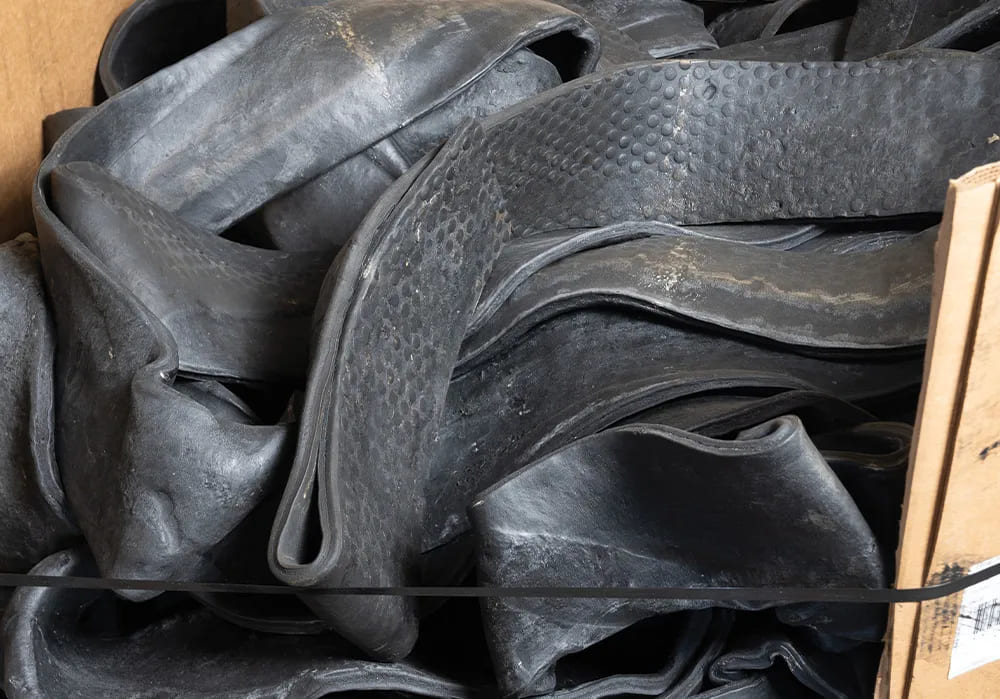
Uncured Rubber Recycling In The Automotive Industry
Read Count : 232
Category : Blogs
Sub Category : Miscellaneous
The automotive industry has long been a leader in sustainability practices, and recycling is a critical component of its eco-friendly initiatives. One of the interesting and emerging fields within this regard is recycling uncured rubber, particularly in tire manufacture. The focus of the process amounts to the recycling of waste rubber generated during production, primarily in tires, which are the most critical components of any vehicle. Hence, producing these tires generates vast amounts of waste in terms of uncured rubber scraps, which can then be recycled. Thus, production waste in the automotive sector is converted into repurposing waste, cost-saving, and, finally, green development. We’ll explore how the automotive industry leverages uncured rubber recycling to enhance tire production and why it is a game-changer for sustainability. What Is Uncured Rubber and Why Recycle It? Uncured rubber, also known as green rubber, is the rubber that hasn’t undergone the vulcanization process. Vulcanization involves treating rubber with heat and sulfur to improve its durability and elasticity, making it suitable for tire production and other industrial uses. During tire manufacturing, a significant amount of uncured rubber is left over as waste. This includes trimmings, excess material from molds, and rejected batches. Recycling this uncured rubber prevents it from being discarded in landfills and creates opportunities to reintegrate it into the manufacturing process, particularly in producing new tires. How the Automotive Industry Recycles Uncured Rubber for Tires 1. Collection of Scrap Material Uncured rubber scraps are collected directly from tire manufacturing facilities, minimizing contamination and maintaining material integrity. This streamlined process ensures that the recycled material is suitable for reuse in high-performance applications. 2. Processing and Reconditioning The collected rubber is processed to remove impurities and achieve the desired consistency. Techniques such as grinding or devulcanization (a chemical or thermal process) break down the rubber, making it pliable for reintegration into tire manufacturing. 3. Blending with Virgin Rubber Recycled uncured rubber is often blended with virgin rubber to maintain the strength and performance characteristics required for tires. This mix ensures that the final product meets industry standards while reducing the reliance on new raw materials. 4. Molding and Vulcanization The recycled and blended rubber is molded into tire components and undergoes vulcanization to achieve the necessary durability and elasticity. This process results in high-quality tires that are as reliable as those made entirely from virgin materials. Advantages of Using Recycled Uncured Rubber in Tire Manufacturing 1. Waste Reduction Recycling uncured rubber significantly reduces the amount of waste generated during tire production. This approach aligns with the automotive industry’s commitment to minimizing its environmental footprint. 2. Cost Savings By reusing uncured rubber scraps, manufacturers save on the costs of raw materials. This cost-efficiency makes tire production more sustainable and economically viable. 3. Resource Conservation Recycling uncured rubber lessens the demand for natural and synthetic rubber, preserving valuable resources like latex from rubber trees and petroleum-based materials. 4. Reduced Carbon Emissions The production of virgin rubber is energy-intensive and generates considerable carbon emissions. By integrating recycled uncured rubber into tire manufacturing, companies can lower their overall carbon footprint. 5. Enhanced Brand Reputation Automotive companies adopting Uncured rubber recycling demonstrate their commitment to sustainability, strengthening their brand image and appeal to eco-conscious consumers. Difficulties in Recycling Uncured Rubber for Tire Manufacturing Recycling uncured rubber for the production of tires has its own set of challenges over and above the advantages associated with it. The challenges include: Material Consistency: Ensuring the recycled rubber meets the quality standards required for tires can be complex. Processing Costs: Advanced recycling techniques, such as devulcanization, can be costly and require specialized equipment. Market Demand: There is a need to increase awareness and demand for tires made with recycled materials to sustain large-scale recycling initiatives. Regulatory Compliance: Tires must meet strict safety and performance standards, adding complexity to the use of recycled materials. To address such issues, collaboration between manufacturers and researchers as well as policymaking is important. The Future of Uncured Rubber Recycling in the Automotive Industry Despite the rise of sustainable practices within the automotive sector, both baseline and advanced scrap rubber recycling technologies might play a critical role in this regard. The emerging devulcanization advanced methodology and robotics are working towards making recycling processes more efficient and economically suitable. Governments and institutions worldwide have come up with more legislation and incentives to stimulate sustainable manufacturing in the production of tires, which ultimately leads to further encouraging the use of recycling raw materials for tire manufacture. The growing technology and awareness will expand the scope of using recycled uncured rubber in manufacturing tires, nurturing and innovating the automotive world.
Comments
- No Comments

